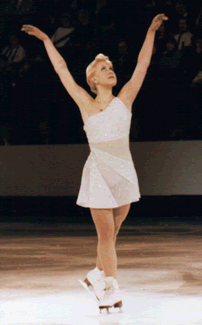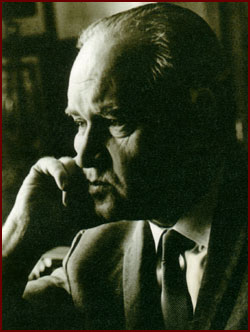There are plenty of famous personalities in Odessa throughout the centuries. Some are political leaders such as Ze’ve Jabotinsky who headed Zionism, Poets and writers such as Isaac Babel, Yuri Olesha and Margarita Aliger. Scientists were also among them to mention a few such as Ilya Mechnikov who won the Nobel Prize in Medicine in 1952 and Igor Tamm who also won the 1958 Nobel Prise in Physics.
Some famous artist’s roster will list Yakov Smirnoff in the field of comedy, Sarkis Ordyan as the famous Armenian painter and Greek philologist, author and promoter of Demotic Gree Ionnis Psycharis to name a few.

The Athletes known to this day are Gymnast Tatiana Gutsu popularly knows as “The Painted Bird of Odessa”, and chess player Efim Geller. Other internationally known in sports are Nikolai Avilov who championed the Olympic decathlon, Oksana Baiul for Olympic figure skating, Lenny Krayzelburg in the field of Olympic swimming and Artur Kyshenko for the K! Muay Thai Kickboxing.
In the field of Music, David Oistrakh makes Odessa popular. This article will focus on his life, his work and accomplishments, and how Odessa became associated with the name Oistrakh,
David Fiodorovich Oistrakh was born on September 30, 1908 and died on October 24, 1974. His recordings as a Jewish Soviet violinist was a signature to many works in violin.
A performer and recording artist in classical concerti, he is famous for his Shostakovich concerts. His works include those with musicians in Europe and USA as well as with orchestras in Russia. Some of the recordings associated with him were violin concerto of Aram Khachaturian, Oistrakh’s recording of Beethoven’s Triple Concerto with Sviatoslav Richter and Mstislav Rostropovich. Dmitri’s Shostakovich;s two violin concerto was also dedicated to him.
As with David Kolker, he was born in the Southern Part of Ukraine in the city of Odessa. His name was taken after his stepfather who owned a basement shop in town and also an amateur violinist. Her mother Isabella Stepanovskaya was also an Opera House singer and during the early days of Oistrakh, she always brought him to listen to the orchestra.
Piotr Stolyarsky was the first and only teacher of Oistrakh and Nathan Milstein was also one of his students who later was partnered with Oistrakh on his first appearance in 1914. This was also the time that Milstein was graduating from the Conservatoire. He also performed the solo part in Glazunov’s Violin Concerto with the direction of Kiev who was also a famous composer in 1927 and this concert opened an opportunity for him to play the Tchaikovsky violin concerto which was hosted in Leningrad together with the Philharmonic Orchestra under the baton of Nikolai Malko in the year to come.
A year later, Oistrakc met his wife Tamara Rotareva who was a pianist after he moved to Moscow and gave his first recital. Their first and only child Igor was born in 1931 who also became a violinist himself and later performed a duet with his father such as the Mozart’s Sinfonia Concertante and Bach Double Concerto. He then received a position teaching at the Moscow Conservatoire from 1934 and then promoted to Professorship in 1939 and became more famous to the levels of Boris Goldstein and Yuri Yankelevich.
Winning international competitions and several national accolades even with the 1935 Soviet Union competition, Oistrakh found international fame. His triumps include second prize at the Wieniawski Compettion in Warsaw during that year where he was beaten by a 16 year old prodigy Ginette Neveu and questioned his being born a virtuoso but in 1937, he garnered the top prize in the Queen Elisabeth Competition which was also known as the Eugene Ysa Competition in Brussels. At that time, this started a long partnership and friendship with the great Lev Oborin also becoming a tutelage to Jacques Thibaud.
He also won the Stalin Prize in 1942 while being active in the Soviet Union during World War II. He also pioneered the new concertos Khachaturian and Nikolai Miaskovsky including the two sonatas of his friend Prokofiev. The two violin concertos and a sonata premiered associated with Oistrakh in the following years was the fruit of friendship with Shostakovich. This blosommed Oistrakh’s career but the Soviet Union refused to let him leave thereby limiting him to teach in Moscow Conservatory. During the invasion of Nazi Germany in Soviet Union, he fronted the lines and entertained soldiers and factory workers in difficult situations.

Oistrakh took the opportunity to travel abroad within the Soviet block and as far as the West during the end of the war. His enormous success started when he appeared at the “Prague Spring” Festival which was his first foreign engagement. He also performed at the “Maggio Musicale” festival in Florence, and in East Germany for the Beethoven celebrations in 1952. He was present in France in the year 1952, Great Britain in 1954 and in 1955, he was given the opportunity to roam the United States. He established a second career as a conduction in 1959, and by 1960, he garnered the most wanted Lenin Prize. His debut in conducting in was in 1962 and he had performed a duo with the famous Soviet pianist Sviatoslave Richter in 1967.
Oistrakh’s 60th birthday was widely celebrated with a performance in the Great Hall of Moscoe Conservatory with the performance of Tchaikovsky concerto which is one of his favorite works. The concerto was conducted by Gennady Rozhdestvensky and this marked Oistrakh as belonging to the great violinist of his time in recognition with the British Menuhin and the Romanian Enescu.
The famous 1702 Conte di Fontana Stradivarius was fiddled with Oistrakh for about 10 years before he traded it with the 1715 Ex Marsick Stradivarius in June 1966
1964 was the year when Oistrakh started having heart failure attacks. At this time, he still worked tremendously and became one of Soviet Union’s cultural ambassador to the West performing recordings and live concerts. He died of another heart attach in Amsterdam after conducting a series of Brahms together with Concertgebouw Orchestra in 1974. His remains were interred in Novodecichy Cemetery after his body was returned to Moscow.